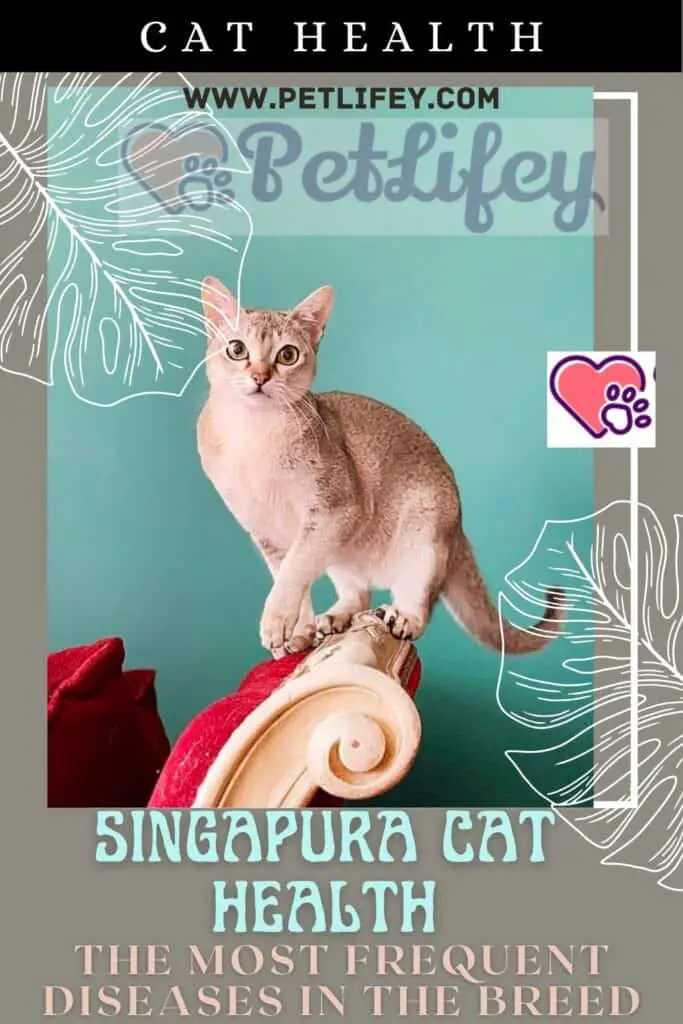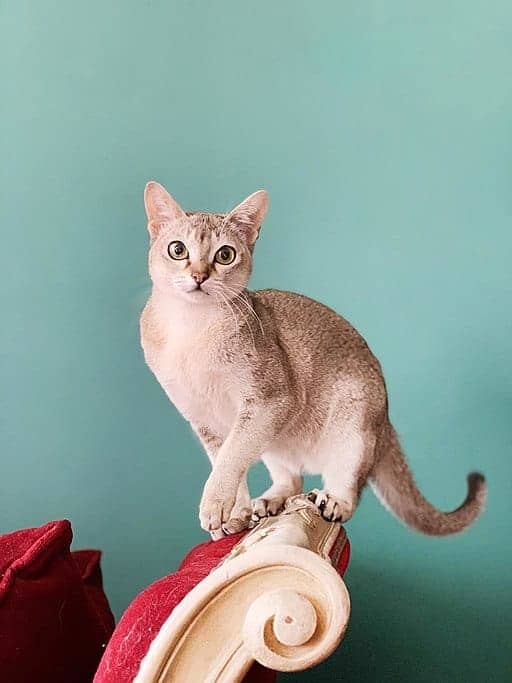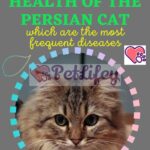The diseases of the Singapura, the most common pathologies in this oriental cat breed. Let’s find out together which ailments can affect him.

The Singapura is a cat that owes its name to the country of origin that is Singapore. It was discovered in Singapore in 1970 and only in the late 1980s did the first cats of this exotic breed arrive in Europe.
However recent as it is, what is known is enough to say that it is a not very delicate breed but not immune from common diseases in felines.
Let’s find out, therefore, which are the diseases of the Singapura, which are the most frequent pathologies in this race disputed between America and Singapore.
Diseases of Singapura

The Singapura is a cat with a life expectancy ranging from 10 to 20 years, with an average of 15 if cared for with due attention.
The Singapura is a small-sized cat whose weight reaches a maximum of 3 kg. However, it is a small but muscular cat.
Generally the Singapura enjoys good health apart from some specific pathologies, such as:
- Pyruvate kinase deficiency: this is a hereditary disease that determines a rather low life expectancy (death occurs within a year) or in a few cases, depending on the evolution of the disease, higher (generally, about ten years). To understand if the cat in question is a carrier of one of the two alleles that develop pyruvate kinase deficiency, it is possible to do a DNA test. This pathology generates severe anemia in the animal. That is why it must be kept in check;
- Hypertrophic cardiomyopathy in cats: tends to occur in specimens aged 4 to 7 and has a familial origin due to one or more mutations of a gene. This disease is manifested by thickening of the ventricular wall which reduces the ventricular lumen in the cat’s heart. As a result, you will be able to collect less blood, which no longer progresses will come back, resulting in congestive heart failure. The diagnosis that the vet will have to make is quite complicated as most cats with hypertrophic cardiomyopathy do not have any symptoms. Regarding the treatment, the primary disease will have to be addressed, which will probably lead to the resolution of the heart conditions. Hypertrophic cardiomyopathy (HCM) appears to have been identified in the breed,
- Progressive retinal atrophy: it can manifest itself in the adult age of the cat but also at a young age, with the difference that an adult and mature cat is better able to adapt to its new life as a blind person, while the kitten has little time to progressively prepare for its new one. blind life. The causes can be of different nature: genetic, structural, degenerative, metabolic, toxic, infectious, nutritional or of a tumor nature. Diagnosed in time, the vet will only be able to alleviate the symptoms of the disease;
- obesity: despite the Singapura’s muscular and hyperactive body, this cat has a tendency to gain weight, which is why it must follow a suitable diet. This breed needs daily physical exercise and it is essential to provide them with various toys that allow them to exercise (for example: cat scratching posts, high shelves to climb and smart toys).
Some Singapura specimens can suffer from the same diseases as domestic felines , i.e. mouth diseases in cats, for example:
- enamel absorption : occurs when the enamel tends to detach and the cat to swallow it.
- carcinoma : tumor of the mucous membranes of the mouth. A rather serious conduction where it is possible to try with radiotherapy. It presents with growths, ulcers and peeling of the tissues.
- gingivitis : an inflammation of the cat’s gums caused by tartar. This occurs when you notice signs in the cat such as: bleeding, itching, redness and inflammation of the part;
- periodontitis : it is an infection that reaches the teeth, generating pus that comes out of the gums and that could be ingested by the feline;
- dental resorption : the part that covers the tooth is completely worn out, this prevents the animal from even eating;
- stomatitis : inflammation of the mucous membrane of the mouth due to the presence of bacteria. This occurs when you notice signs in the cat such as: redness, excessive salivation and irritation of the tissues;
- tartar : Bacteria that attach to food debris and more, form dental plaque, which can worsen and become tartar.
Let us always remember that a healthy, adequate and suitable diet for the species may result in less hair loss, a better state of the coat in general and above all a good state of health with a long life.
Other common diseases for all breeds
Of course, the diseases that affect the cat’s oral cavity are unfortunately not the only ones but there are many other diseases that are common in all cats and can also affect the Singapura.
These are the main diseases in cats:
- Mange: It is caused by a mite of which there are several species and subspecies that behave in different ways. It is transmissible to other animals and to humans, there are several types and has symptoms similar to eczema: itching, scabs, patchy hair loss. This disease is also called scabies;
- Feline toxoplasmosis : an infectious disease caused by the parasite Toxoplasma gondii, which finds its final host in the feline where it can reproduce;
- FeLV: known as feline leukemia, it affects the bone marrow and is caused by a virus of the Retrovirus family, among which there is also the one responsible for FIV itself;
- FIV: a is a feline immunodeficiency syndrome similar to human HIV, transmissible through saliva and blood. It is not curable and there is no vaccine but, if intercepted in time, it can sometimes allow a considerable survival;
- Cold : it is a light respiratory disease but which in any case must be treated to avoid complications and also be attacked by secondary diseases of the respiratory tract;
- Conjunctivitis: inflammation of the mucous membranes of the eye.






